November 17, 2017
Year Two students from the Department of Architecture at Xi’an Jiaotong-Liverpool University designed and constructed thirty-eight large cardboard shelter structures that were exhibited, tested and reviewed on the University’s South Campus.
The shelters were made as part of the module ‘ARC104 Structures and Materials’ in the first year of the BEng Architecture programme. The cardboard shelter task is the first large-scale design exercise for students upon entry into the programme, presenting students with many challenges characteristic for the architecture profession.
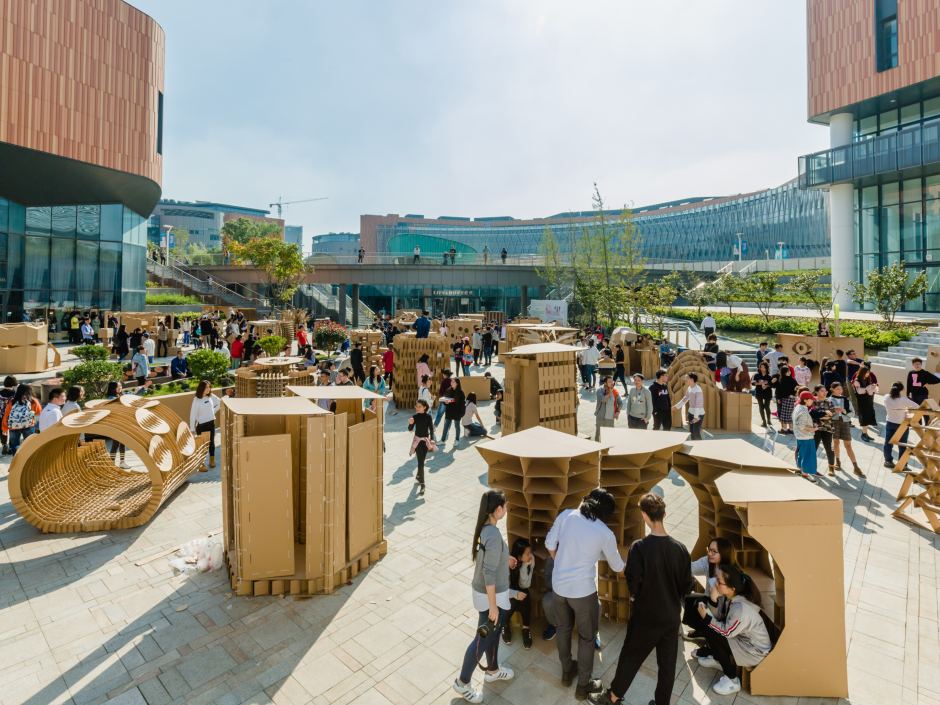
Students worked in teams of six to develop design ideas that satisfy both aesthetic as well as technical requirements, and to construct them within a limited period of time and with limited materials (cardboard only, with no glue or tape allowed).
“Students have to resolve difficult challenges when coordinating their typically complicated design ideas with the material characteristics of cardboard,” explained Dr Christiane M. Herr, associate professor in the Department of Architecture and coordinator of the module.
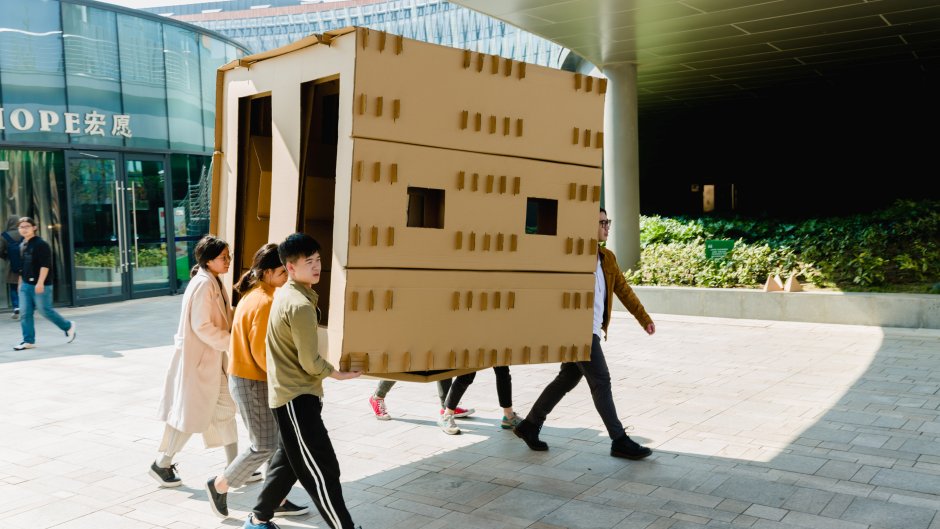
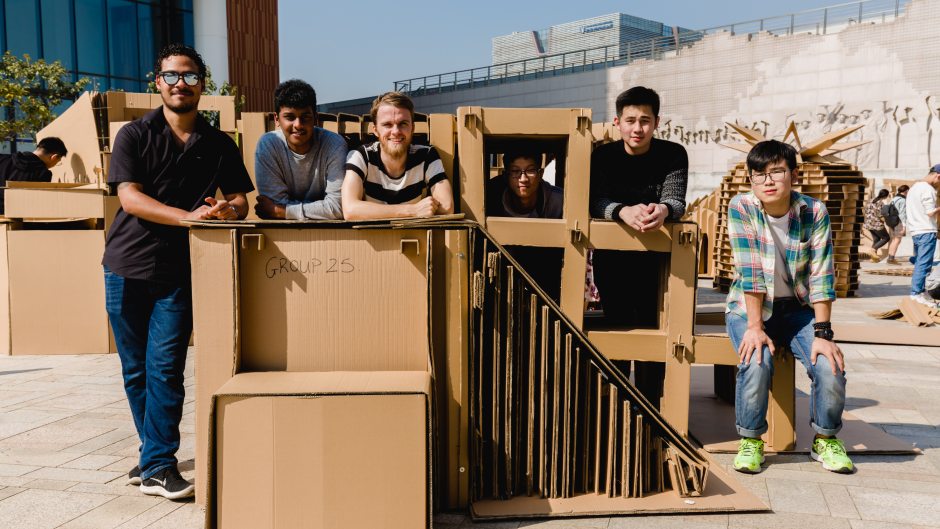
LEARNING DESIGN BY DESIGNING
The shelters were designed for primary school children aged 11 and 12 who acted as ‘clients’ for the project. As a first stage in the design process, one class of children from Suzhou Industrial Park Foreign Languages School (SIPFLS) were invited to imagine and draw their ‘dream houses’, which were then shown to XJTLU architecture students to give them their initial inspiration.
After four weeks, students produced half-scale models of their shelters, which were tested and discussed at the collaborating school. “The students were surprised to find even primary school children have the capacity to provide constructive comments and to give plenty of advice on how to improve all aspects of the shelters,” said Christiane.
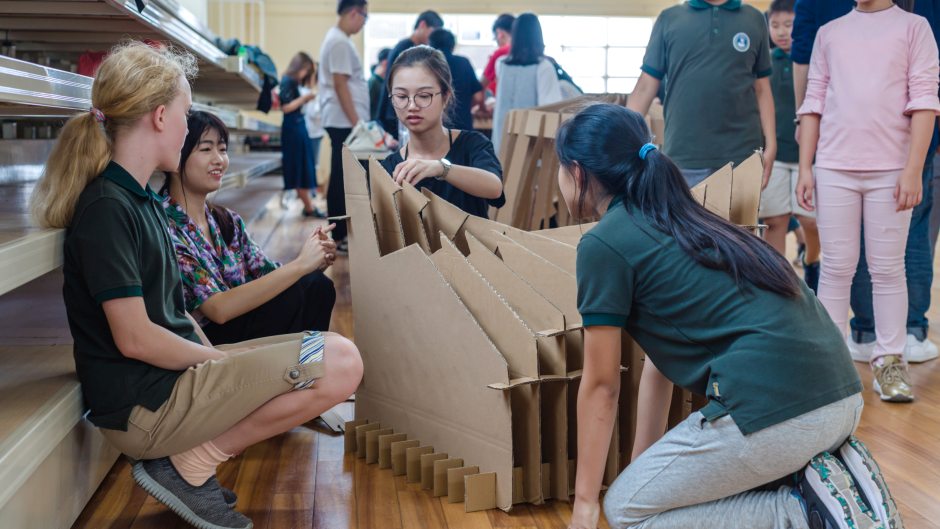

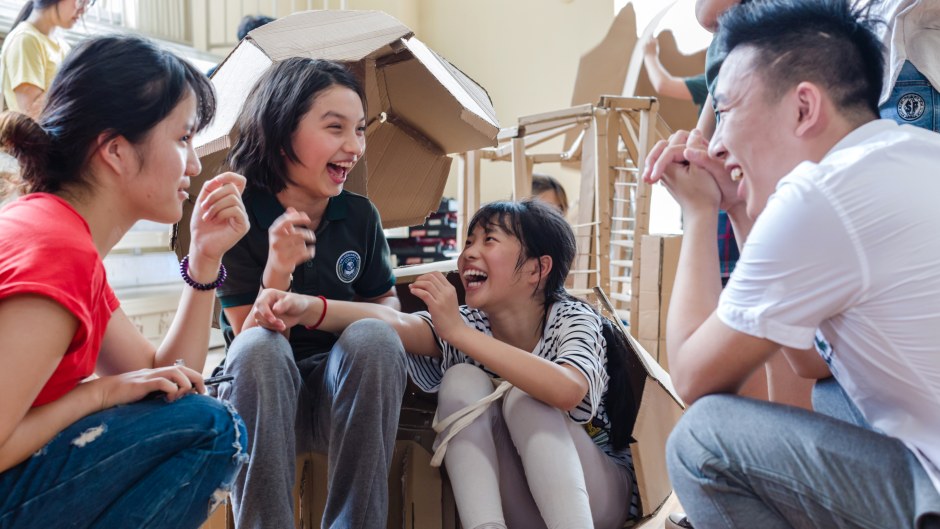
“A basic aspect architecture students learn at our school is that design first and foremost aims to create high-quality environments for people,” she continued. “This focus on human experience and quality of living is particularly important in built environments like China, where rapid growth in recent decades has mainly emphasised technical and functional aspects of buildings.
“In addition, architects never design buildings merely for their own preferences, they are working with and for clients that may have different or unique preferences compared to their own," said Christiane.
ONSITE TESTING AND EVALUATION
Following the interim review, the twenty-eight Year Six pupils from SIPFLS were invited to the XJTLU campus for a one hour onsite test and evaluation of the full-scale shelter models at the final review.
Joining academic staff from the Department of Architecture to give comments to each team, the children were also invited to select their favourite shelter. Criteria for selecting the best shelter included aesthetic as well as functional and safety aspects, with children typically preferring spaces that were interesting and that provided engaging activities.
Through a sticker-based voting process, Team 2 (Yuxi Yang, Min Zhang, Yifu Gong, Xinran Zhang, Lilin Wang, and Yan Wang, pictured below) finally won the Children’s Choice 2017: Best Cardboard Shelter Award.
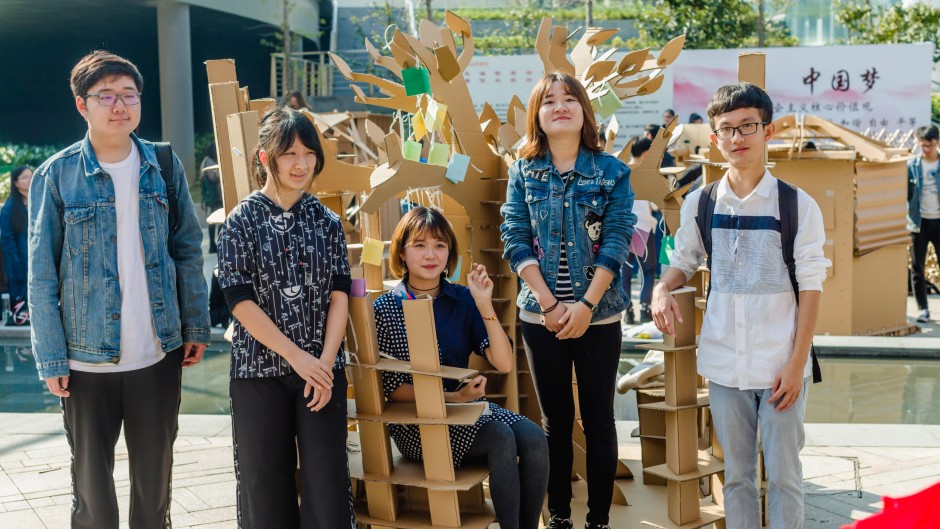
Architects are responsible for the safety and well-being of users of the buildings they design, and the collaboration with school children makes students acutely aware of the safety, usability, and load-bearing capacity of their shelters. They also learn that their clients’ preferences and behaviours are not necessarily in-line with their predictions, as Christiane explained:
“In terms of structural design thinking, students learn that structures and engineering principles are a core part of architecture, and should form a key aspect of the design of architectural spaces,” she said. “Our programme aims to educate architects who are not only excellent designers but who are also able to collaborate across disciplinary boundaries, for example with civil engineers, in their professional futures.”
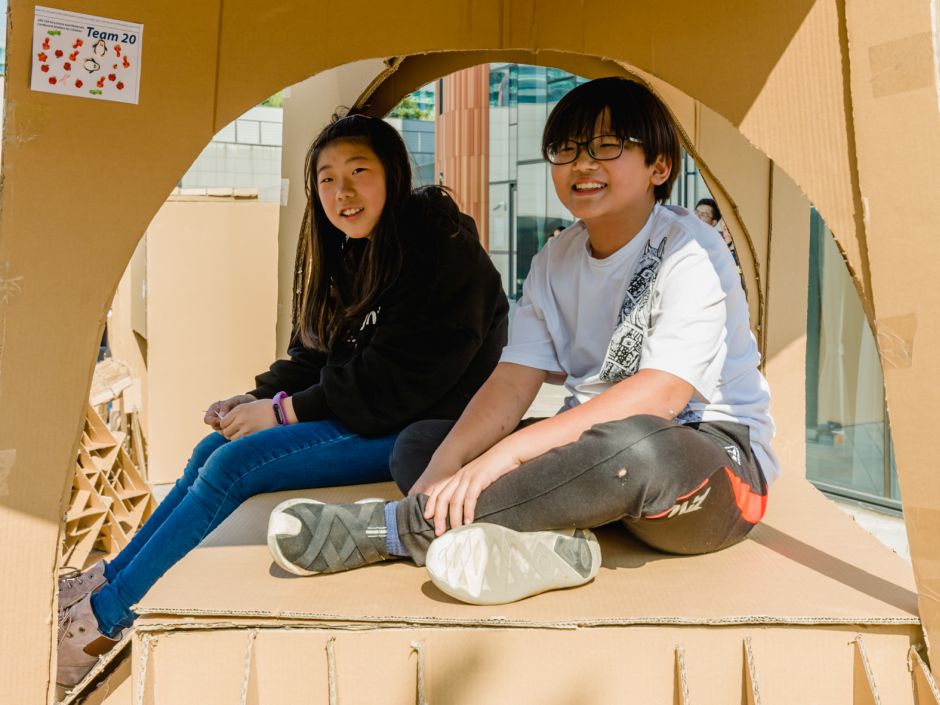
LEARNING THROUGH RESEARCHING AND DESIGNING
The cardboard structures event has been held annually since the establishment of the Department of Architecture in 2011, with students designing various structures including shelters, bridges, and chairs.
Dr Christiane M. Herr said that the project not only teaches students to embrace key professional values from the beginning of their studies, it also teaches students new ways of learning through applied research and design. Throughout the design process, teachers only give guidance at key stages of the project, requiring teams to self-organise and to take charge of their learning processes.
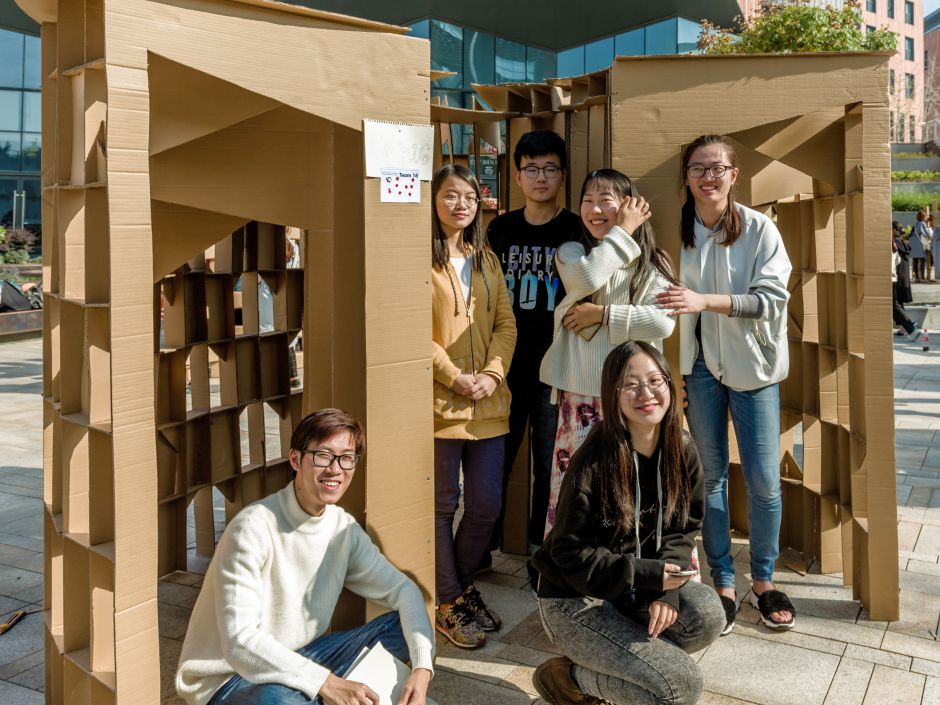
Christiane explained further: “This event forms part of a carefully designed educational approach, illustrating XJTLU’s focus on research-led teaching. Instead of assuming that teaching merely consists of ‘transferring’ knowledge from teachers to students through lectures, teaching in this module supports students in learning directly from their actions and their environments.
“To this end, learning opportunities are offered that allow for experiments including failure, negotiation, learning from and with peers, analysis of observations, and personal reflection. Students accustomed to this way of individually motivated learning will be well prepared to take on the challenges of professional architectural work in their future careers, and will be able to lead themselves as well as others rather than waiting for instructions.”
A selection of cardboard shelters, among them the shelter winning this year’s award, are on display in XJTLU's Design Building until the end of November.
by Dr Christiane M. Herr; edited by Danny Abbasi; photos by Milan Ognjanovic
November 17, 2017
RELATED NEWS
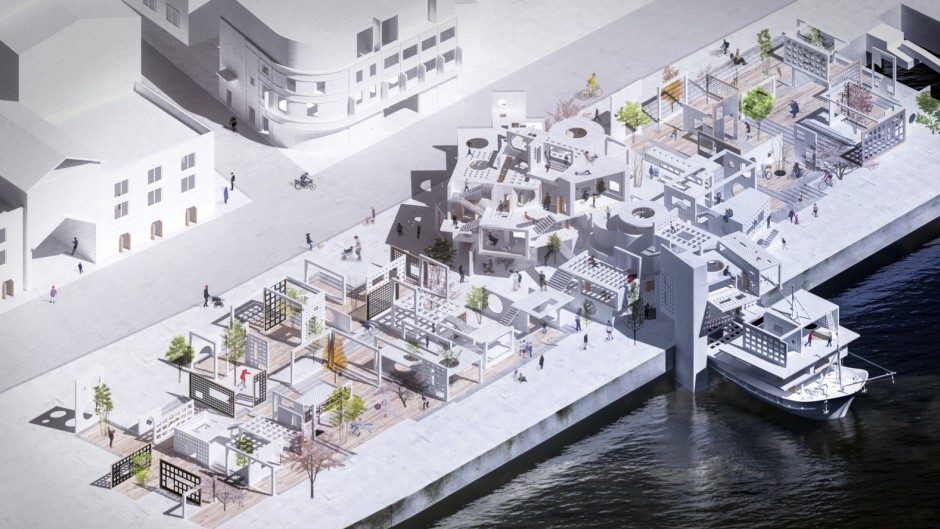
Staff and students win at national architecture competition
Staff and students from the Department of Architecture at Xi’an Jiaotong-Liverpool University are celebrating having won three awards at a competition open t...
Learn more
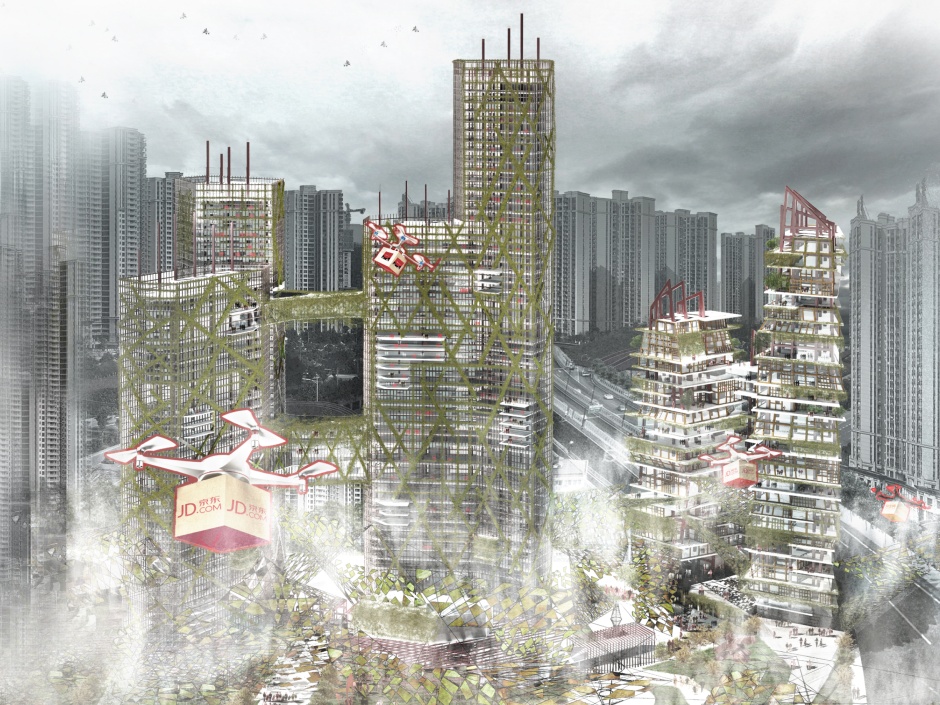
Student designs for Shanghai's high-rise future
Two students from the Department of Architecture at Xi’an Jiaotong-Liverpool University, currently in their second year of the Master of Architectural Design...
Learn more







